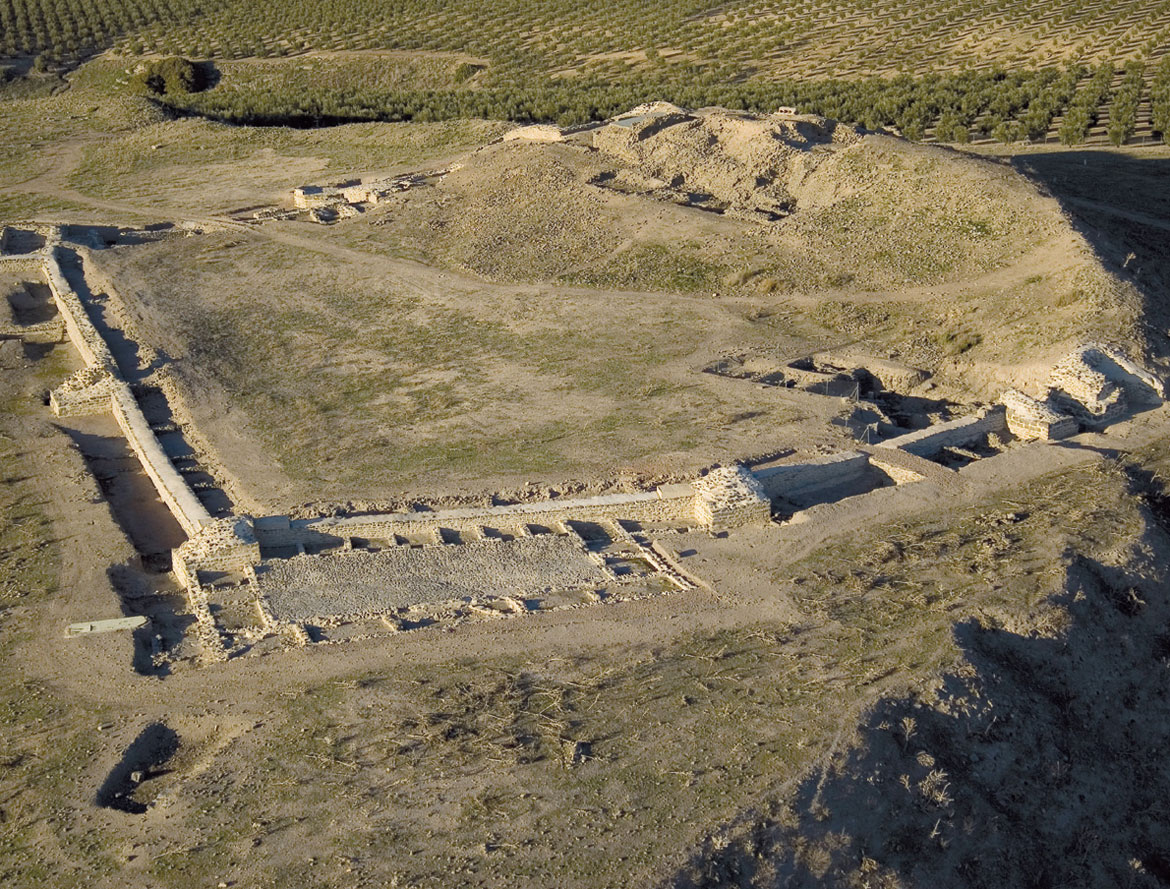Ategua
| ARCHAEOLOGICAL SITE |
| ORIGINS: COPPER AGE |
| 3rd MILLENNIUM B.C. – 14TH CENTURY |
| LOCATION: CARRETERA PROVINCIAL 271 from Teba. (Km. Point 6,300) |
Ategua is an archaeological site located in the municipality of Cordoba (Spain) which was declared a National Monument in 1982 and an Archaeological Asset of Cultural Interest in 2004. Currently, the site covers an area of 205 hectares and is managed by the Network of Cultural Enclaves of Andalusia (RECA), which is focusing its efforts on preparing the site to be opened to the public.
Located about 20 km southeast of Córdoba, on the banks of the Guadajoz River, overlooking the old road that connects Córdoba with the province of Granada, Ategua is one of the most spectacular archaeological sites in the province of Córdoba. Its main historical importance lies in the key role it played in the closing stages of the civil war between the Caesarean and Pompeian factions (called the Bellum Hispaniense by Caesar), which culminated in the sacking of Corduba and Caesar’s final victory in the celebrated Battle of Munda (45 BC). However, the archaeological excavations carried out in the 1960s and 1980s by archaeologists A. Blanco Freijeiro and M. Martín Bueno, revealed that the site in fact had a much longer history.
According to current archaeological research, the first stable settlement in Ategua appeared in the Bronze Age, although certain findings point to earlier occupation in the Copper Age, in the third millennium BC. By the 8th century BC, Ategua was already a major fortified Tartessian settlement. The famous Ategua Stele, found in the nearby Cortijo de Teba and on display at the Provincial Archaeological Museum of Cordoba, testifies to the importance of this oppidum (fortified town) located on the southern limits of the Corduba territory.
Remains of the impressive fortifications from the Iberian-Roman oppidum survive to this day, especially in the north-eastern sector of the ‘acropolis’. These must have been the defences which Caesar’s forces scaled to take possession of the wheat reserves stored in the town by Pompeian faction, and which proved vital for supplying Caesar’s legions before they achieved the final victory at Munda, in the nearby Sevillian countryside.
Ategua continued to be occupied during the imperial era, although it is unclear exactly what its legal status was. A number of houses have been excavated from this period which had cisterns for the water supply, as well as what is thought to have been a public building.
In the medieval period, a fortified enclosure from the late 12th century has been discovered, which took advantage of the Ibero-Roman defences on the eastern side, while on the northern, western and southern flanks, a new wall of rammed earth topped by a stone plinth was constructed, reinforced with ten quadrangular towers. This fortress has been linked to the efforts of the recently-established Almohad regime to secure military control of the main communication routes in al-Andalus.
Finally, after the Castilian conquest of the area in the 1340s, the Almohad gates were bolstered by an octagonal tower and a bastion situated at the north-eastern end, designed to control the route between Córdoba and Granada.
In the 14th century, a market was established just outside the walls between the two towers in the south-western sector, in a small rectangular area paved with stone slabs. Shortly after, the settlement was abandoned, and Ategua fell into oblivion and was little more than a pile of ruins next to the Cortijo de Teba la Vieja until it was rediscovered by archaeologists in the 1960s.
